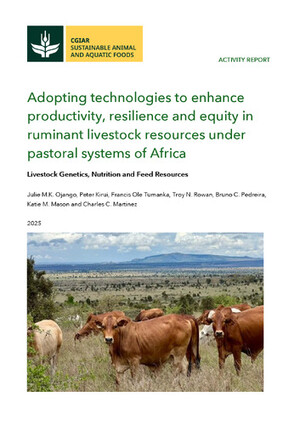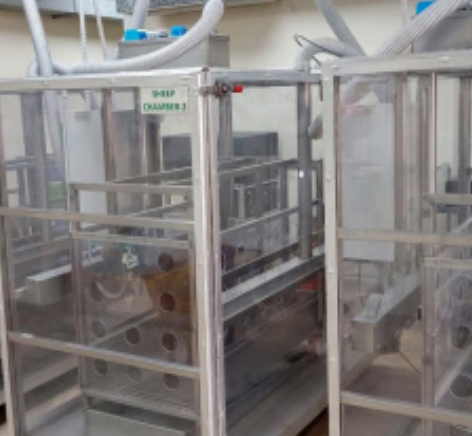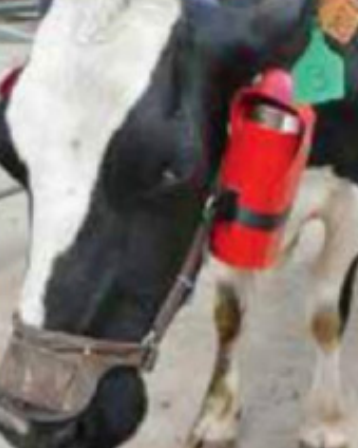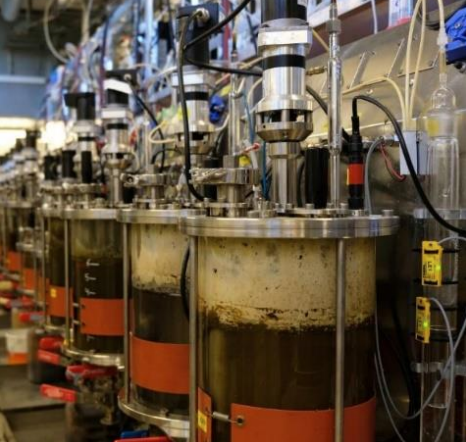
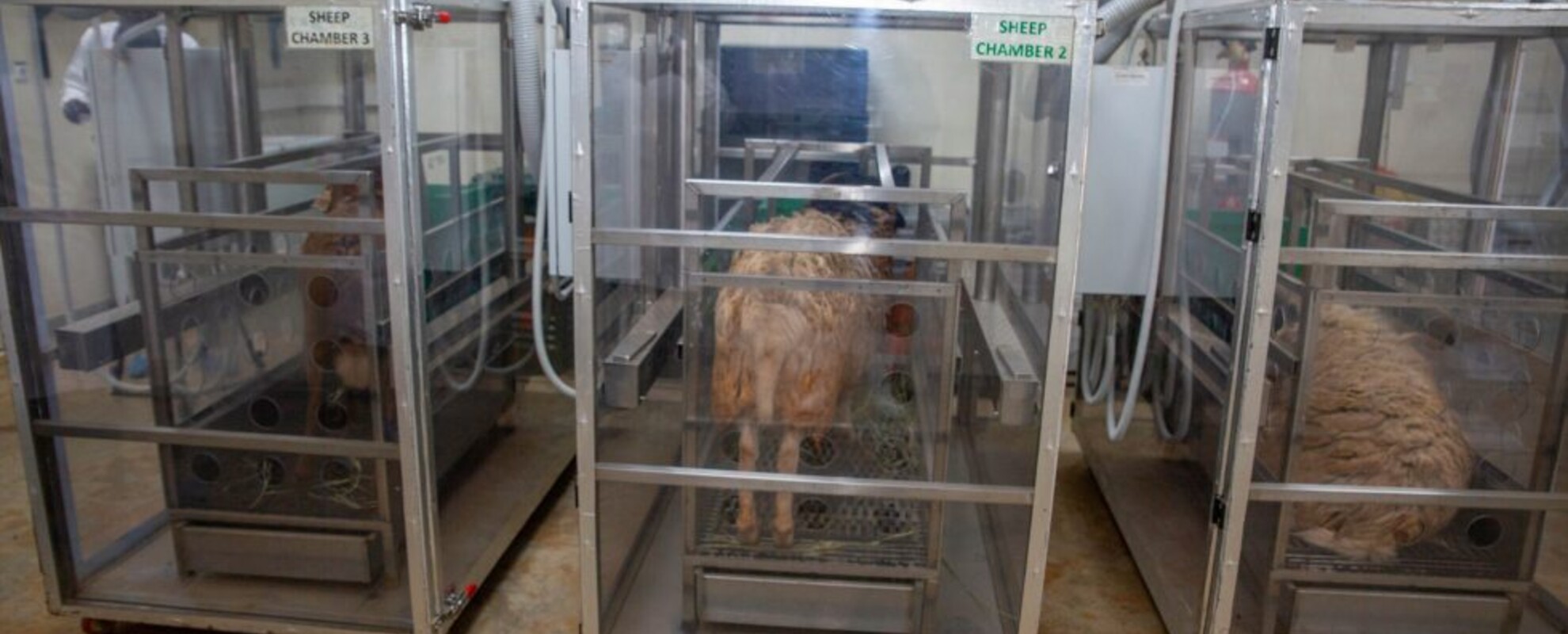
Enteric methane research
The enteric methane mitigation research laboratory is outfitted with state-of-the-art greenhouse gas (GHG) measurement infrastructure that helps test the effect of livestock mitigation strategies on GHG emissions.
The technologies include:
In-vivo animal respiration chambers (considered the "gold standard") paired with a Picarro laser gas analyzer, as well as a field-deployable SF6 tracer method with gas chromatographs. These tools measure enteric methane emissions from both small and large ruminants.
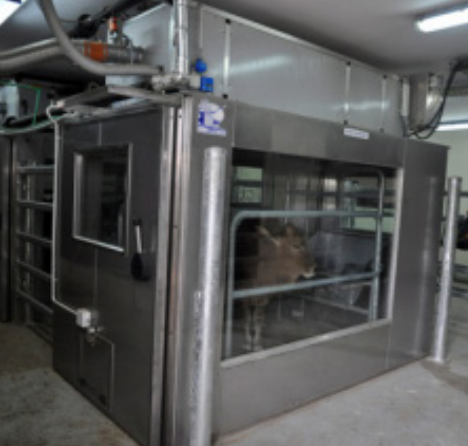 |
|
|
| 3 Large ruminant chambers | 3 Small ruminant chambers | SF6 - Cattle and small ruminants |
In-vitro anerobic batch reactors and continuous stirred tank reactors (CSTRs) equipped with a gas flow meter and biogas (methane and carbon dioxide) analyzers. They are used to test feed digestibility, screen for low-methane emitting rumen microbiomes and feeds, identify efficient microorganisms for biogas production, and discover methanotrophic bacteria that convert methane into alternative microbial proteins.
|
|
| In-vitro anerobic batch bottles | Continuously stirred tank reactors (CSTR) |
If you're interested in learning more or running tests with our laboratory, please reach out to the email in "Get in touch."



